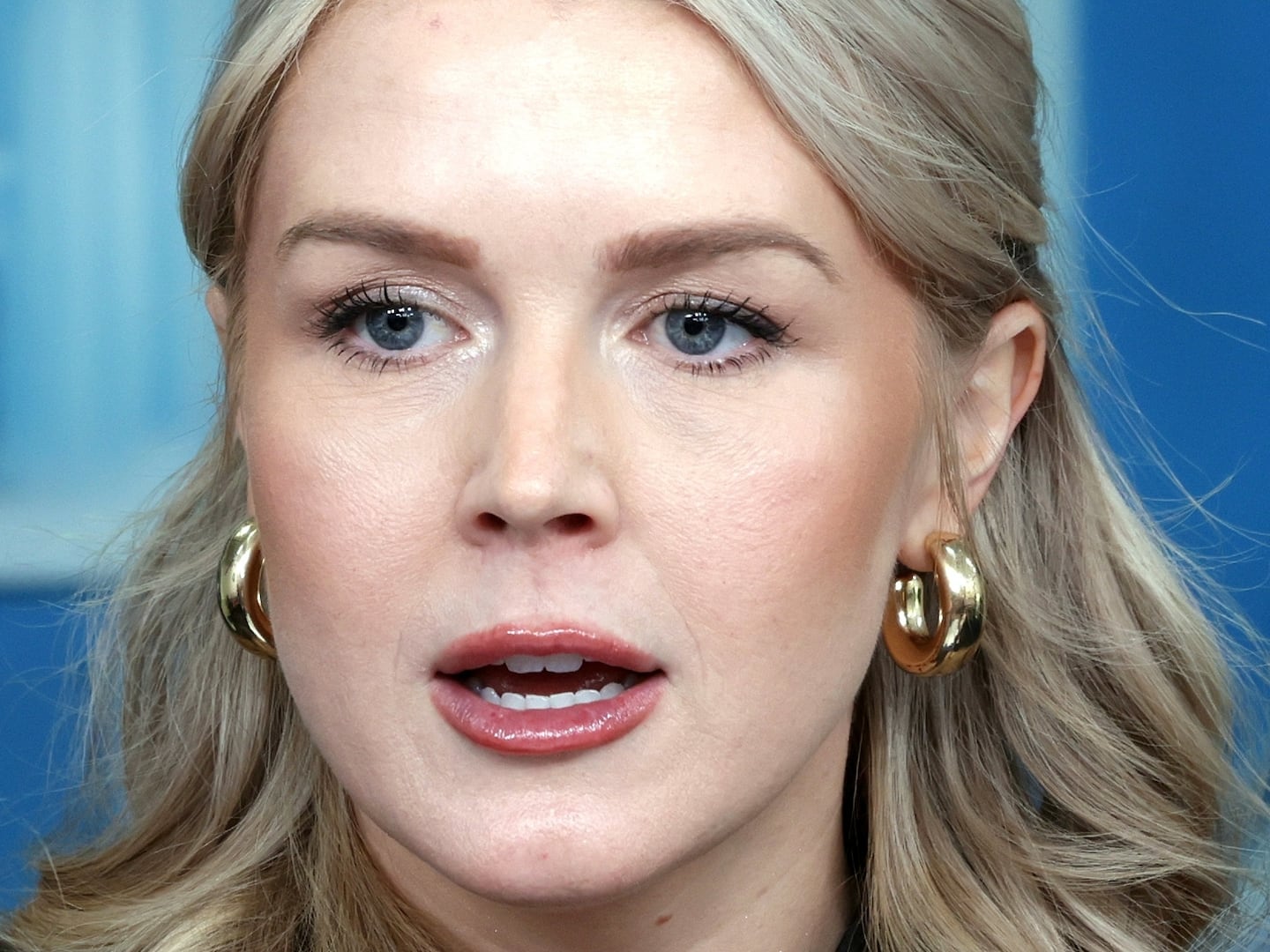Who and what is a “sharent” exactly? If you have both a child and a smartphone, it’s probably you.
Sharenting, a term to describe parents who actively share their kids’ digital identities online, is rampant in the United States, with 92 percent of toddlers under the age of 2 already having their own unique digital identity. As 2017 comes to a close, it appears to be a phenomenon that shows no sign of slowing down.
“When I first started looking into the topic, I was wrestling with the issue as a mother myself,” says Stacey Steinberg, one of the most noted researchers on the issue and the author of “Sharenting: Children’s Privacy in the Age of Social Media.” “The more I looked into it, the more I realized, this isn’t just a moral issue, this is actually a public health issue.”
It’s no surprise then that international child advocacy organization UNICEF released a report this month lamenting the dangers of the “bedroom culture” which is leading to reckless sharenting—one that can have profound implications on safety and psychological welfare, not to mention a child’s right to privacy now, or later in life, their right to be digitally erased.
The statistics are stressful to consider:
- One in four children said their parents’ sharenting made them feel embarrassed, anxious, worried, or sad.
- Fifty percent of images shared on pedophile sites are stolen from social media sites.
- Eighty-eight percent of teens think people are sharing too much online.
- Fourteen percent of American moms maintain their own blogs of which there are an estimated 3.9 million in North America—with the top 10 percent making six figures.
- The pull to sharent—for profit, fame, and approval—is increasingly lucrative. “InstaMom” influencers make thousands of dollars with every campaign while YouTube’s top family vloggers make hundreds of thousands of dollars.
“Examining sharenting is more about truly understanding the implications of what we are doing and how it’s affecting kids,” Steinberg says. “This is a huge children’s rights issue, but we can’t alienate parents who are doing this. Most parents truly crave more information to make informed decisions.”
Not just amongst parents but internationally, opinions are often mixed. In the United Kingdom, opinion on the topic is split right down the middle, with half of parents keeping their kids’ identities private. In France, it might get you sent to jail. In Austria, a woman sued her parents for the embarrassing photos they posted of her on Facebook. And in America, it’s a topic sometimes treated with very jaded eyes, even in the press, such as The New York Times’ piece asking the question, “Why Isn’t Your Toddler Paying the Mortgage?”
Upon closer examination, however, sharenting is less fun trend-piece or made-up media portmanteau (it was an official word of the year in 2016) and much more wake-up call as to how few protections exist for children in this emerging space. Unlike, say, in Hollywood, which employs the Child Actor’s Bill (sometimes known as Coogan Law) as protection, for all those babies who are now being literally born on YouTube or kids who daily are being asked by their parents to shill for brands for money, there is no equivalent protection.
A number of Daily Dot pieces get straight to the heart of examining the sharenting-over-parenting monster: “The Problem With Viral ‘Sassy’ Toddler Videos,” or “Is Creating ‘Mommy-blog’ Content the New Child Labor?” Indeed, when a viral exposé like James Bridle’s “Something is Wrong on the Internet,” which published in November, unveiled just how disturbing the children’s landscape on YouTube has become, advertiser reaction was brutal and swift, essentially forcing the video giant to take action.
In the weeks since, YouTube has kicked off a number of channels including Toy Freaks, which had more than 8 million subscribers and featured disturbing content of the father appearing to traumatize his children with “pranks” that left them terrorized. In 2018, YouTube plans to hire 10,000 manual reviewers to monitor the issue.
A shift may be starting to take place. In the wake of the contentious viral saga of bullied child Keaton Jones, an editorial in The Washington Post this month pleaded, “Parents, Please Stop Turning Your Kids Into Viral Sensations,” in which Sonny Bunch wrote, “For God’s sake: Stop putting your kids’ tears online for the rest of us to either laugh at or empathize with. Everything on the Internet will be there forever. Your children shouldn’t be forced to live with your need for attention.”
Another article in Slate wryly summed up the naked appeal for so many sharents trying to break into “The Multimillion-Dollar Industry of Being a Happy Family on YouTube.” As Leigh Alexander wrote, “Can kids even truly consent to this use of their image? For that matter, what does it mean when a parent is, essentially, a child’s employer? In the case of ‘DaddyofFive,’ two parents played tricks on their children and lied to them in order to film and monetize their distress as comedy—and ultimately lost custody of those children, facing charges of child neglect.”
Most soberly of all, earlier this year in JAMA Pediatrics, the warning could not be clearer to both pediatricians and parents who might be oblivious. The report, co-authored by Steinberg warns: “The disclosures parents share online will follow their children into adulthood, and although there are benefits to this, there are also potential harms that are unrecognized by many parents. Harms may include identity theft, resharing pirated information on predator sites, sharing psychosocial information that should remain private, and sharing revealing or embarrassing information that may be misused by others.”
Child safety advocates are trying to determine best practices, but it’s an uphill battle when the spectrum for what one parent feels comfortable with versus another is so wildly different. Indeed, earlier this year gossip sites reported that Stella McCartney was upset when her friends the Beckhams posted a picture of her 6-year-old.
Actress Romola Garai spoke out even more angrily, saying, “The privacy of children is invaded on a catastrophic scale… I think we’ll look back at this period as utterly perverse. It should be illegal to post pictures of children without their permission. If you have a private channel to share things among friends, that’s one thing. But I can’t imagine that this generation of children won’t turn round in 20 years and say, ‘I didn’t want to be naked in a picture seen by millions of people I don’t know.’ Privacy is very valuable.”
No matter a parent’s stance on the topic, there are certain privacy and safety fundamentals to follow. Like hiding birthdates, addresses, school information, medical data—anything that could be misused in the wrong hands.
“It amazes me when parents are so flippant about posting so much information online about their children—including standing in front of their homes, with their address featured in the pictures and their schools, too,” says Sue Scheff, the author of Shame Nation. “It’s not only about child predators. Many kids simply don’t want their parents oversharing on social about their lives.”
Alicia Blum-Ross, a researcher at the London School of Economics, suggests parents seize upon some of the recent sharenting controversy as an “opportunity to engage” with children, thereby figuring out the “extent that they understand what social media is” and “what is appropriate or not and what might you share to one person and not the other?” Weighing the pros and cons can be tricky, Blum-Ross says, because “telling parents to ‘share nothing’ may in effect cut them off from much needed and valued sources of support.” That’s why, “ultimately, parents need to be mindful about what they share, why, and with whom and to involve their children in that decision wherever possible.”
That is exactly the golden rule that Jessica Delfino lives by in protecting the privacy of her son, and only sharing photos with close family and friends. She writes about the challenges of parenting on her blog “One and Done Mom”—but never shows her child’s face.
“I just can’t do it,” says Delfino, who ironically in her own life has extensively chronicled herself digitally—from songs she’s recorded about her vagina to a stunt where she wore a garbage bag around New York to see how people reacted. “Trust me, resisting the urge to sharent goes against every natural instinct I have as a performer. That part of me is like, ‘This kid is a goldmine. His face is worth millions!’ As a mother, I’m like, ‘Don’t screw this baby up. Don’t be a jerk. Don’t be that person.’”
Interestingly, Delfino say it’s not an issue of consent, but that “even if he could and did beg me to post his face, I’d say no. It’s about me protecting him from the scary world out there.”
Even for avid sharenters like writer Marina Gomberg, who recently published, “Do I Post Too Much About My Son? Yup, But I Can’t Stop (and Won’t Stop)” in The Salt Lake Tribune, her sentiments echo Delfino’s, and she holds herself to a personal standard that ensures parenting takes the priority—always. She’s also knowledgeable about sharenting’s dark side.
“The extremes of sharenting are definitely exploitive and concerning,” she says. “Which is why my wife and I are strict about what we share. We never post pictures of our son when he is crying or upset. I honestly don’t understand why people do that. Why aren’t they attending to their child?”
That is the big question it’s shocking more people do not ask. In a must-read piece about the aftermath and estrangement of family YouTubers, a 13-year-old toy reviewer reveals the awful reality of what it’s like to have your mother so focused on sharenting, the parenting seems to go almost entirely by the wayside.
Interestingly, while sharenting is a new phenomenon in the realm of digital dissemination, in terms of the controversy it stirs in protecting vulnerable children, the issue is not new at all. The godmother of sharenting just might be controversial photographer Sally Mann and her stirring, disturbing portraits of her children in 1992, which ignited a firestorm that in some ways has never stopped. Indeed, art historian Anne Higonnet’s words on Mann’s photographs then ring just as true (and as unresolved) as they do today: “No subject is as publicly dangerous now as the subject of the child’s body.”
Just like the YouTube family vloggers of 2017 who bring up how it is actually the children begging to do all those sponsored videos, Mann once famously explained, “The children love to model and are continuously thinking of new pictures.” But like those vloggers of today, whose privacy selectivity is striking, Mann is notorious for the same. In 1994, when a documentarian made a short film on her work, she blocked its release because it “felt too much like real life; that was an invasion.” In her 2015 memoir (one year before the suicide of her eldest son, who had long grappled with schizophrenia), Mann discussed when she stops filming. “As my father weakened with brain cancer,” she wrote, “I tried to photograph him… But I put away my camera when I began to see that photographing his loss of dignity would cause him pain.”
That’s the fundamental question inherent in all of this, really: loss of dignity.
Incredibly, it is often the children—not the adults—who are more sensitive to the issue. Already, researchers are finding that it is the young people in our digital sharenting culture trying to talk sense into the parents, and not the other way around. (In a 2014 academic journal article called “‘I Would Never Post That’: Children, Moral Sensitivity and Online Disclosure,” the article revealed it was the young people who had an acute understanding of the “moral consequences of disclosing personal information about oneself and about others.”)
For London writer Charlotte Philby, who announced in a touching piece why she was quitting sharenting, she described the heartbreaking moment her daughter came across an image of herself on her mom’s phone, and quietly reacted to it how it made her feel. “I hate this one,” she said, pleading to her mother’s better nature. “I look really sad. Please delete it.”
Philby fell into the parenting market by accident when she became editor of a successful parenting website, and over time found herself desensitized by the glut of pictures bombarding her news feed.
“I found myself increasingly sharing pictures, albeit largely ones I thought were funny or shone a meaningful light on what it is to be a multi-tasking parent, until there came a point where I no longer felt comfortable with my own behavior,” she explains. In June last year, Philby announced a 12-month hiatus from social media, amidst wider concerns about the amount of information she shared with her 10,000 followers, and the amount of time and energy that social media had started to occupy in her life.
“It was time stolen bit by bit—a bus ride here, a lunchtime there,” she says.
Moreover, it was about setting an example to her children who were nearing ages where they, too, would soon be starting to use social media themselves.
“How could I expect them to behave responsibly online,” she asks, “when I was demonstrating such a lack of restraint myself?”
Sharenting and social addiction can indeed result in kids becoming overly conscious of how they appear because they’re highly aware of how concerned their parents are. Indeed, a BBC study showed that 25 percent of 10- to 12-year-olds who post selfies say it is “very important” to look good.
Josie Denise, once a rising mommy-blogger influencer, is currently wrestling with where she falls on the sharenting spectrum. Having gained a great bit of attention when she dramatically quit (and revealed the artifice behind) the world of mommy blogging a year ago, now she says, “In the beginning, I was happy to whore myself out for anyone willing to send me free lipstick, you know?... When I quit posting to The American Mama, I was earning between $725-$1500 per partnership, sometimes more or less depending on the length of the campaign and number of posts. New ‘influencers’ gasp and awe over the six-figure dream, but in reality for the majority of online content creators, the workload is unsustainable unless you are ready to hire a team of people.”
Fortunately, there are a radical array of options for parents wrestling with how to determine their own sharenting approach. All of which contain a single commonality: Please do not forget to ask how the child feels about what is occurring.
As the New Statesman underscores in a piece about sharenting’s most extreme forms on YouTube, the “responsibility lies with parents themselves to decide whether or how they should film their children. The consequences of this lack of regulation will most likely become apparent in a decade, when YouTube’s child celebrities have grown up.”
Sharenting law scholar Steinberg predicts: “At some point in the future, courts may weigh in, framing the question not as a moral one but as a legal one, asking, ‘Where does a parent’s right to share end and a child’s right to privacy begin?’”
Another question to ask: How important is a child’s right to attention?
An incredible piece in the Harvard Business Journal titled “What Captures Your Attention Controls Your Life” offers an illustrative anecdote that slices right through any justification a parent might make for how children prefer sharenting over parenting. The author Kare Anderson explains how she was once hired by Disney executives to figure out exactly what—of all the magical wonders and costumed characters and rides and sugary delights—captivated toddlers and infants visiting the theme park the most.
“[A]fter a couple of hours of close observation,” Anderson wrote, “we realized that what most captured the young children’s attention wasn’t Disney-conjured magic. Instead it was their parents’ cell phones, especially when the parents were using them. Those kids clearly understood what held their parents’ attention—and they wanted it too.”
In one of the most viral blog pieces ever written on the topic, Rachel Macy Stafford dives clear-eyed into the mindset of a child and what translates to them as love and attention. It’s not a photo. It’s definitely not a half-hour spent taking a photo, editing it, and then uploading it. And my God, it is not monetization.
Called “How to Miss a Childhood,” her manifesto speaks to parents and their relationship to their son or daughter.
“Look in to her eyes when she speaks to you… Your uninterrupted gaze is love to your child… The gift of your total presence is love to your child… Hold her hand, rub his back, listen to her heart beat, and smooth his hair.”
No one sees any of this. No one “likes” it. The experience certainly can’t be shared, monetized, preserved, documented, or tweaked with a filter. No one might even know the moment ever existed. No one, that is, except for parent and child.






